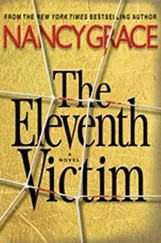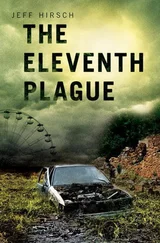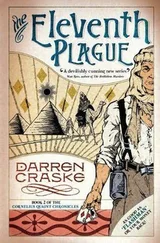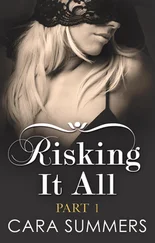Anthony Summers - The Eleventh Day
Здесь есть возможность читать онлайн «Anthony Summers - The Eleventh Day» весь текст электронной книги совершенно бесплатно (целиком полную версию без сокращений). В некоторых случаях можно слушать аудио, скачать через торрент в формате fb2 и присутствует краткое содержание. Жанр: Старинная литература, на английском языке. Описание произведения, (предисловие) а так же отзывы посетителей доступны на портале библиотеки ЛибКат.
- Название:The Eleventh Day
- Автор:
- Жанр:
- Год:неизвестен
- ISBN:нет данных
- Рейтинг книги:3 / 5. Голосов: 1
-
Избранное:Добавить в избранное
- Отзывы:
-
Ваша оценка:
- 60
- 1
- 2
- 3
- 4
- 5
The Eleventh Day: краткое содержание, описание и аннотация
Предлагаем к чтению аннотацию, описание, краткое содержание или предисловие (зависит от того, что написал сам автор книги «The Eleventh Day»). Если вы не нашли необходимую информацию о книге — напишите в комментариях, мы постараемся отыскать её.
The Eleventh Day — читать онлайн бесплатно полную книгу (весь текст) целиком
Ниже представлен текст книги, разбитый по страницам. Система сохранения места последней прочитанной страницы, позволяет с удобством читать онлайн бесплатно книгу «The Eleventh Day», без необходимости каждый раз заново искать на чём Вы остановились. Поставьте закладку, и сможете в любой момент перейти на страницу, на которой закончили чтение.
Интервал:
Закладка:
R
UMSFELD:
OK, let me ask the question here. Has that directive been transmitted to the aircraft?
C
HENEY:
Yes, it has.
R
UMSFELD:
So we’ve got a couple of aircraft up there that have those instructions at this present time?
C
HENEY:
That is correct. And it’s my understanding they’ve already taken a couple of aircraft out.
Later, interviewed for his own department’s report, Rumsfeld was asked whether shoot-down authorization “had come from the Vice President.” “Technically,” he replied, “it couldn’t. Because the Vice President is not in the chain of command. The President and he were talking, and the President and I were talking, and the Vice President and I were talking. Clearly he was involved in the process.”
That fuzzy answer was of no use in establishing when and by whom the shoot-down authority was issued. Rumsfeld’s public testimony to the 9/11 Commission was no more useful. The record of what he told staff in closed session is still withheld, and his 2011 memoir added no substantive detail.
The White House itself ought to have been the best source of information on communications between Bush and Cheney, but the White House proved unhelpful. Though the Commission did manage to get clearance to interview a few of the staff members who had been around the President and Vice President that morning, what they learned on the shoot-down issue was of virtually no use.
“Very little new information has been gained in the five White House meetings conducted thus far,” a frustrated staffer noted in the final months of the Commission’s work. “To a person, no one has any recollection of the circumstances and details surrounding the authorization to shoot down commercial aircraft.… Our sense is that the White House will take the position that it is not possible to reconstruct—with any degree of accuracy or reliability—what went on that morning.”
Investigators also asked for interviews with relevant Secret Service agents, but the White House stalled. Then it offered limited access to some of them, with an attorney present. It was next to impossible, the staffer reported, to probe beyond the vague stories told by Bush and Cheney in their media interviews.
Faced with this obstruction, the Commission team concentrated on the paper trail. The White House famously keeps track of all high-level communications, maintains records of phone calls, logs of Secret Service operations, logs kept by military officers, a Situation Room log, a log of activity in the Presidential Emergency Operations Center—PEOC—the bunker in the bowels of the White House where Cheney spent much of the day on September 11, and logs kept aboard Air Force One. For the day of 9/11, there were also notes kept by individuals: President Bush’s press secretary, Vice President Cheney’s chief of staff, and his wife, Lynne Cheney.
Once again, however, the investigators found themselves stalled. White House personnel sought to limit the Commission’s access to the contemporary record, while simultaneously insisting it was unreliable. Undeterred, Commission staff built a chronology as best they could from available logs and from what witness testimony they did manage to obtain.
The record, such as we have it, does not support the Bush/Cheney version of events, that the President gave Cheney shoot-down authorization during a phone conversation sometime soon after 10:00 A.M., after Cheney’s arrival in the underground bunker.
The Bush/Cheney version, with its implication of the requisite line of command—Bush granted authority, Cheney transmitted it—does not mesh with events as they unfolded.
The emergency teleconferences that morning—one in the White House Situation Room, one at the Pentagon, another at the FAA—overlapped with one another, making for confusion rather than clarity. To participate in one, senior staff would temporarily have to drop out of another. The conference in the Situation Room—below the West Wing—was not linked to the part of the Pentagon dealing with the crisis, nor was it adequately linked to the Vice President in the PEOC, beneath the East Wing. “In my mind,” one witness recalled of the teleconferences, “they were competing venues for command and control and decision-making.”
It was not only the teleconferences that added to the fog. Some were to recall having seen staff members with a phone to each ear, reliance on runners to convey messages, and the use of personal cell phones to complete calls when landlines were unavailable. The cell phone system itself was at times overwhelmed.
Alerted to an aircraft approaching the city, just before Flight 77 struck the Pentagon, the Secret Service had hustled the Vice President toward the PEOC. Cheney had been logged in there at 9:58, having paused en route to use a phone in an adjacent passageway—and was to remain in the PEOC’s conference room thenceforth.
It was from the PEOC, within moments of his arrival there, that the Vice President supposedly had his exchange with Bush about shoot-down authority. Yet, though many other key events of that morning are reflected in the contemporary record, there is no documentary evidence of the call. It is especially perplexing, moreover, that—assuming there was such a call and assuming the President did give shoot-down authority—the Vice President made no immediate move to pass on the order.
What the record does show occurred, at about the time the Cheney-Bush call is supposed to have been made, is that staff in the Situation Room received reports that further aircraft were missing, were told that a Combat Air Patrol had been established over Washington, and began attempting to reach the President.
At 10:03, in the Situation Room, NSC staffer Paul Kurtz made a note as follows: “asking Prez authority to shoot down a/c [aircraft].” That attempt to reach Bush, however, was apparently unsuccessful. The evidence is that calls reached not the President but only those with the Vice President in the PEOC. The weight of the written and spoken evidence indicates that it was beween 10:10 and 10:20—on being told of the progress of a suspect airplane supposedly headed for the Washington area—that Cheney twice rapped out a shoot-down order.
The Vice President’s wife, Lynne, who was in the PEOC and not far from her husband, recorded some of the exchange about shoot-down authority in notes she made that morning.
Mrs. Cheney noted at “10:10”:
Aircraft coming in from 80 miles out
Dick asked? Scramble fighters?
Navy commander Anthony Barnes, the senior military officer on duty in the PEOC that morning, told the authors in 2010, “A call comes into the PEOC. I’m talking to a general on a secure line. He asks for permission to engage confirmed terrorists on board commercial airplanes. I went into the conference room and I posed this question to the Vice President exactly the way it was posed to me. I received permission.” Cheney’s chief of staff, Scooter Libby, has recalled in an interview that the Vice President, asked whether fighters had authority to engage, barely paused before responding simply, “Yes.”
At 10:12, Mrs. Cheney noted:
60 miles out—confirmed JOC [the Secret Service’s Joint Operations Center]
hijacked aircraft
fighters cleared to engage
The Vice President’s wife would recall feeling “a sort of chill up my spine, that this is the kind of things you only read about in novels … We had to shoot down those planes if they didn’t divert.”
“I asked for confirmation on what I was being allowed to pass back to the general,” Barnes recalled. “It was twice. I said it the first time and he answered straight up.… It wasn’t indiscriminately: ‘Splat everything airborne!’ It was ‘If you can confirm there’s another terrorist aircraft inbound, permission is granted to take it out.’ … I went back to the phone and said to the general, ‘The Vice President has authorized you to engage confirmed terrorist aboard commercial aircraft.’ ”
Читать дальшеИнтервал:
Закладка:
Похожие книги на «The Eleventh Day»
Представляем Вашему вниманию похожие книги на «The Eleventh Day» списком для выбора. Мы отобрали схожую по названию и смыслу литературу в надежде предоставить читателям больше вариантов отыскать новые, интересные, ещё непрочитанные произведения.
Обсуждение, отзывы о книге «The Eleventh Day» и просто собственные мнения читателей. Оставьте ваши комментарии, напишите, что Вы думаете о произведении, его смысле или главных героях. Укажите что конкретно понравилось, а что нет, и почему Вы так считаете.











